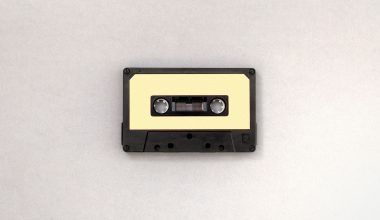In today’s world, albums are more than just collections of music or photos. Whether digital or physical, understanding album sizes is essential for artists, photographers, and collectors. If you’ve ever wondered about the right size for your music album or photo book, this comprehensive guide will break down everything you need to know.
From standard album sizes to unique formats, this blog explores the album size list in depth, providing insights to help you make the best choice.
Why Does Album Size Matter?
The size of an album plays a significant role in its functionality and appeal:
- Storage Efficiency: Smaller albums save space, while larger ones make a statement.
- Aesthetic Appeal: The size can impact how visuals or album artwork is displayed.
- Convenience: Knowing album sizes ensures compatibility with devices or storage solutions.
Understanding album size lists is critical for musicians, photographers, and anyone dealing with creative media.
Album Size List for Music
Digital Music Albums
Digital music albums are measured in terms of file size rather than physical dimensions. The file size depends on:
- Number of Tracks: A typical album contains 10–15 songs.
- Audio Quality: Higher-quality files (e.g., FLAC or WAV) take up more space than MP3s.
Approximate Sizes for Digital Music Albums:
- MP3 (128 kbps): 30–50 MB for a 10-track album.
- MP3 (320 kbps): 80–120 MB.
- FLAC/WAV: 300–500 MB or more.
Physical Music Albums
For physical albums, the size of the CD, vinyl record, or cassette determines the dimensions:
- CD Cases: Standard size is 5.59 inches x 4.92 inches.
- Vinyl Records: Common sizes are 7-inch, 10-inch, and 12-inch.
- Cassettes: Cases typically measure 4.2 inches x 2.6 inches.
Each format has its unique aesthetic and storage requirements, making the album size list important for collectors.
Album Size List for Photos
Physical Photo Albums
Photo albums come in various sizes to suit different occasions and preferences. Common sizes include:
- Small Albums: 4×6 inches – Ideal for personal snapshots or gifts.
- Medium Albums: 8×10 inches – Popular for wedding or travel photos.
- Large Albums: 12×12 inches – Best for professional portfolios or family keepsakes.
Digital Photo Albums
The size of digital albums depends on image resolution and file formats:
- JPEG Images: 10–20 MB per photo for high-resolution files.
- RAW Images: 20–50 MB or more per photo.
- Album Sizes: A 100-photo digital album can range from 1 GB to 5 GB, depending on image quality.
Popular Album Sizes for Different Needs
- Wedding Albums
- Size: 8×8 inches to 12×12 inches.
- Format: Hardcover or leather-bound for a premium look.
- Portfolio Albums
- Size: 11×14 inches or larger.
- Format: High-quality prints for showcasing work.
- Music Artist Albums
- Vinyl: 12-inch records are standard for LPs.
- Digital: High-quality formats like FLAC for audiophiles.
- Travel Albums
- Size: Compact options like 6×8 inches for easy portability.
Tips for Choosing the Right Album Size
- Consider Your Purpose
- For personal use, smaller albums are convenient.
- For professional work, larger sizes add impact.
- Think About Storage
- Choose sizes that fit your shelves, drawers, or digital storage limits.
- Prioritize Quality
- Higher resolution and better materials ensure longevity.
- Budget Wisely
- Larger sizes often cost more, so choose a size that fits your budget.
Managing Digital Album Sizes
Digital albums require careful management to optimize storage and access. Here are some tips:
Compress Files
Use compression tools to reduce file sizes without compromising quality.
Use Cloud Storage
Platforms like Google Photos or Dropbox offer scalable storage for digital albums.
Organize Albums
Create folders by date, event, or theme to keep your albums manageable.
Backup Regularly
Protect your digital albums by backing them up to an external drive or cloud service.
How to Resize Albums
Whether physical or digital, resizing albums can enhance their usability:
For Photo Albums
- Use editing software like Photoshop to resize images before printing.
- Opt for custom album services that let you choose specific dimensions.
For Music Albums
- Convert audio files to compressed formats like MP3 for smaller file sizes.
- Use tools like Audacity to adjust audio quality.
The Future of Albums: Digital and Beyond
The concept of albums is evolving with technology. Digital albums are becoming more interactive, incorporating multimedia elements like videos and animations. For music lovers, streaming services like Spotify offer virtual albums, eliminating the need for physical formats.
Conclusion
Understanding the album size list is essential for anyone working with music or photos. Whether you’re creating a wedding album, curating a vinyl collection, or managing digital files, the right size makes all the difference.
Related Articles:
For further reading, explore these related articles:
- Physical Album Chart: A Deep Dive into Music Sales Rankings
- Album Drawing: Tips to Design Stunning Cover Art
For additional resources on music marketing and distribution, visit Deliver My Tune.






